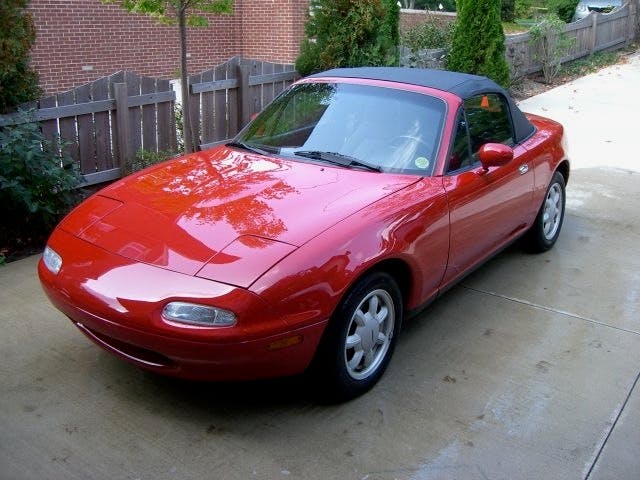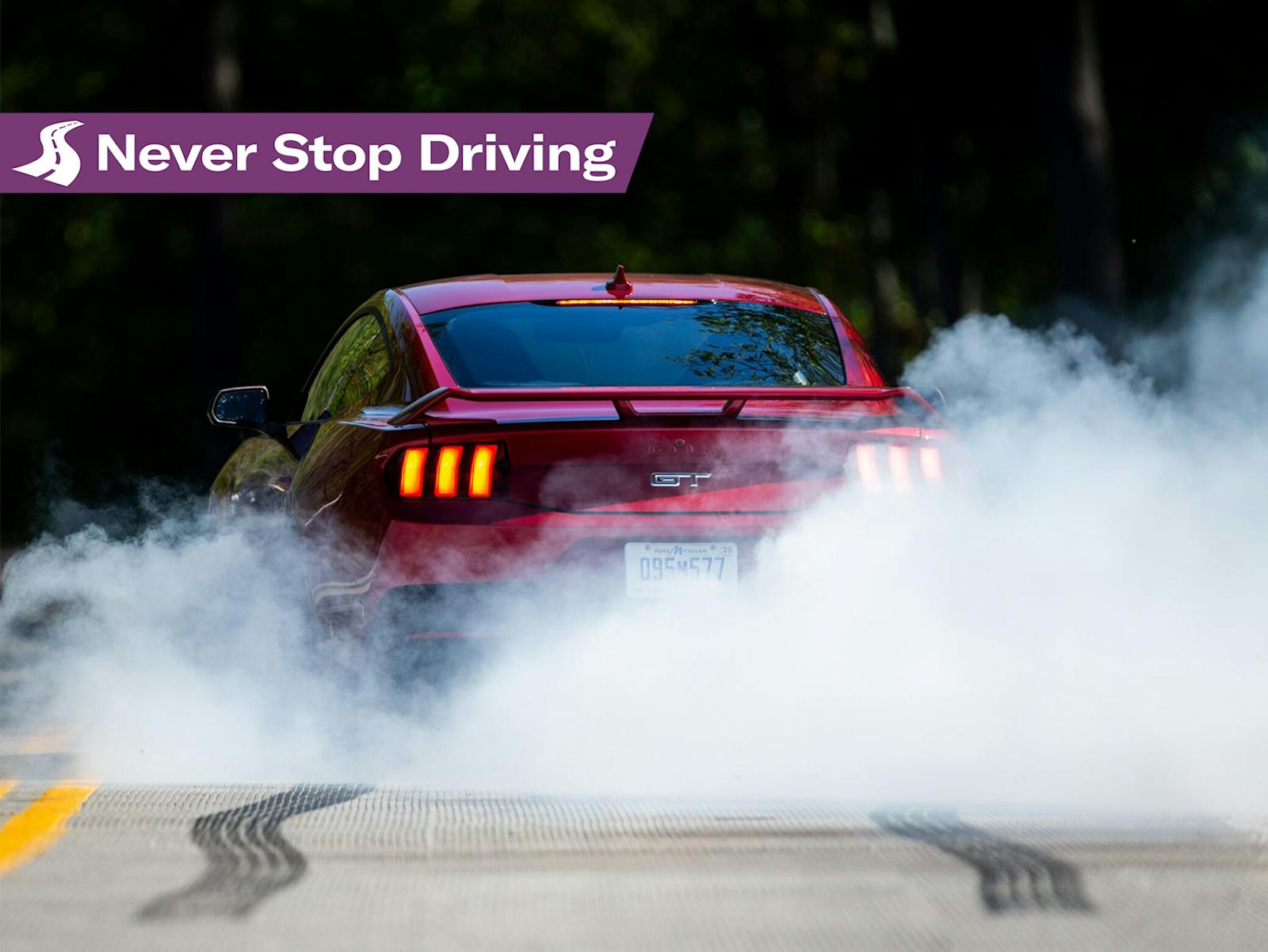Never Stop Driving #53: The many lives of the Dodge Challenger
One day, the Dodge Challenger will be required study for every automotive marketing executive. The rear-wheel-drive platform that underpins the two-door Challenger and its Charger sedan sibling is now nearly two decades old—ancient as automotive life cycles go—yet Dodge continues to reap publicity and sales with its muscle cars. Just this week, Dodge confirmed that the promised pairing of a six-speed manual transmission with the 717-horsepower V-8 is finally available. There’s even a digital tool called the “Horsepower locator” to help consumers locate stick-shift Hellcats.
Why do we care? In an era when most vehicles on the road are lookalike crossovers, Dodge’s devotion to audacious throwback machines is admirable. These cars can roast tires with such ease that it feels socially irresponsible, which can be, yeah, fun. Unfortunately, both the Challenger and the Chevy Camaro, another cherished muscle car, end production later this year. A lot of car nuts figure they better do the gettin’ while the gettin’s good.
I don’t see the need for hand wringing. Both cars have “died” before only to be resurrected. Perhaps there’s a natural cycle for impractical muscle cars. Tens of thousands of Camaros and Challengers were made over the past two decades, so there should be a healthy supply of used models for a very long time. And who’s to say what coolness is around the corner? A Tesla recently lapped the Nürburgring in under seven and a half minutes, which is about as quick as a Ferrari Enzo. And the Ford Mustang isn’t going anywhere. An updated version will debut this fall.
Speaking of Ford, the company now has a reported 400,000 subscribers to its digital products that cater to commercial fleets. The software provides reports on vehicle health and driver performance, plus other productivity tools. Carmakers see these scalable software services as major future revenue sources. Expect to see this field grow.
Subscriptions, however, won’t cover a safety feature that the National Highway Traffic Safety Administration (NHTSA) wants to make mandatory in all new cars: automatic emergency braking, which automatically slows or stops a car if on-board computers determine that an impact is imminent. Most new cars already have some version of this technology, so the proposed regulation is probably a done deal.
I have mixed feelings. On one hand, I’ve got kids and loved ones and there are too many idiot drivers who are now playing with their phones rather than looking at the road. On the other hand, we risk abdicating driver responsibility. You want to stare at your phone while you’re in charge of a two-ton speeding object? No problem, we’ll have the computers save you and your fellow drivers. Seems like a slippery slope to fully autonomous vehicles to me.
While the hype around self-driving vehicles has markedly cooled, the technology is steadily improving and both Waymo and Cruise plan to expand their services. This article is a helpful summary.
I’ve long advocated that self-driving cars can take the wheel from those who don’t cherish driving. I might see that in my lifetime. Meanwhile, I’m passing on the love of driving to whomever I can, including my own kids. The other day, I drove the Webster family’s 1992 Miata, which I purchased 20 years ago for $1800. The roadster, with sun-damaged paint and a cracking soft top, is our beater fun machine. It looks tired but drives brilliantly and is now most often used by my oldest kid.
I texted my son that I’d forgotten how much I love the little Mazda. He replied: “I always get out of the car happier than when I got in.” Oh, I silently celebrated, he gets it. Miatas are so cheap and plentiful that they lack cachet, so they’re too often overlooked. Do yourself a huge favor: Drive one and please post in the comments how it made you feel (here’s a handy Miata Buyer’s Guide and a list of all the articles we’ve published on the car).

Like the Miata, the first-generation Porsche Boxster is a driver’s gem and also a bargain. A nearly untouched Boxster will be auctioned this weekend at the Porsche Experience Center.
We released a fascinating piece about a weird 200-mph Aston Martin, wrenched on an old Chevy pickup, and showed the global nature of car culture with a video from Indonesia. All of this high-quality material is free and you can help us spread the car love by joining the Hagerty Drivers Club.
Don’t forget that the 24 Hours of Le Mans race is this weekend. There are too many juicy story lines to list here, but it should be a cracker of a contest. General Motors, for example, is running three cars. We also produced a documentary on the race and its history, which is a terrific primer.
Have a great weekend!
Hear from Larry every Friday by subscribing to this newsletter.
***
Check out the Hagerty Media homepage so you don’t miss a single story, or better yet, bookmark it.


The Miata is great but I’ll also add my 2008 Pontiac Solstice to inexpensive, enjoyable, little cars. Originally purchased for my son as his second car after learning how to drive in and then and demonstrating his abilities for a year on a $3000 Kia Spectra. He drove the automatic Solstice for his senior year in high school and first year of college. After the 2 year he came to me wanting something faster and wanted me to teach him to drive a manual. After some searching he found and bought a 1999 Camaro Z28 with a 6-speed. I’m equally proud and terrified he’s driving a manual car with that much power. That Camaro has become something we bond over as we fix minor problems of a 24 year old car. But getting back to the Solstice, he loved driving it all the time and because it was such a nice car, I took it instead of selling it and it never fails to put a smile on my face as well. Tons of “thumbs-up” especially from the “JR VETTE” license plate on the back.
The Pontiac is super fun too. If memory serves I don’t fit in them as well as I do the Miata. The Solstice sure looks fantastic.
A used Miata is a bargain! A used Boxster is not, in my opinion; have you seen the cost on parts and labor for P cars?? While the price of entry may be cheap, keeping it running may not be exactly economical.
Yeah good point. There are pros and cons to each. The Boxster has a lot more truck space and the car’s power folding top makes for a much quieter cabin than the Miata. The parts prices, however, favor the Miata.
Great story. I have owned 7 Challengers: 4 1970’s and 3 2010’s, could work on them myself in my sleep!
Every time I drive my NA Miata it puts a smile on my face. Have had it for more than 20 years now. Best bang for the dollar, easy to work on for the most part, and outstanding aftermarket support. With a few tasteful mods, or completely stock, they are a joy to drive with ideal weight distribution, control arm suspension, and direct and precise steering. My Momo Monte Carlo steering wheel seems like it should have come from the factory. I have made a few mods, and would never consider selling it.
Enjoy your fine car Dave!
When consumers look past “new is better” and recognize something as a great design and at least “good enough” (if not the best… that varies) at what it does you get things that last longer than the expected product cycle.
Certain models of Gibson and Fender guitars have done this.
The original VW beetle, continued production of AC Cobra bodies, Toyota having best-selling vehicles that are oldest in class repeatedly…
Dodge Charger and Challenger (and 300… Magnum RIP…) fit this too. It’s too bad we don’t get more of this as consumers vs. purposely obsoleting parts for tiny or non-improvements. That just costs us more down the line and makes it harder to restore/maintain old ones.
The “evolved” style of F150s, Subaru, etc. over multiple generations is playing to the safe expectations styling while still dinging you for the new parts cost of a platform redesign.
The irony is that with all the environment talk around vehicles for the past 50 years longevity of parts usage and compatibility across models (and makes if you were serious) could have benefits. The move into EV may just accomplish some of this just to get the purchasing costs down.
The average consumer has never cared who made the brake components in the vehicle, and while some passionate people on these forums will disagree the average consumer doesn’t care about any of the components (i.e, engine). You’re lucky if the brand badge matters as a prestige element.
In response to self driving. In light of all the hype and also negative talk regarding self driving, I find it irresponsible of automaker GMC pushing their self driving mode while playing patty cake behind the wheel on their tv ads.